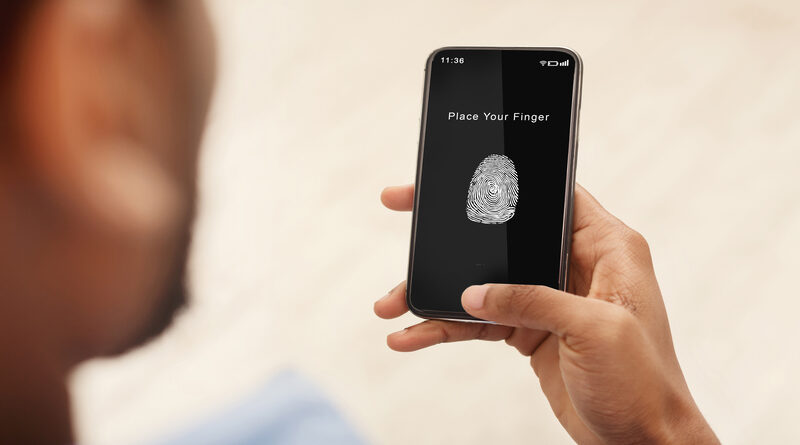Biometrics and information security
Since ancient times, people have devised various means and methods of keeping their valuable papers and valuables from prying eyes or from the hands of thieves, and every time thieves develop their methods of breaking locks, people resort to improving their defenses, and the conflict continues to this day and there is no indication that it stopped in one day the days.
One of the modern methods in circulation in the hands of everyone is to set a password for their computers and mobile phones, and even to enter them into some places. Passwords at first were only numbers, then they became a mixture of numbers and letters. Within these protected systems.
As a result of the repeated piracy operations and the development of “hackers” their methods of fraud, many countries and major technology companies began to search for more effective means to preserve the security of their information, and from here was the mass migration towards “biosecurity” or what is also called “biometrics”.
What are biometrics?
Biometrics simply are any metrics related to human features, and it is a security mechanism that is used to authenticate and provide access to a specific facility or system based on automatic and immediate verification of an individual’s physical characteristics, and since biosecurity assesses an individual’s physical elements or biological data, it is one of the most powerful security techniques. Physical used to verify identity.
One of the most popular examples of a biometric system is the fingerprint and facial recognition technology of smart mobile devices currently in use.
Biosecurity is primarily applied in environments with critical physical security requirements or that are highly prone to identity theft, where systems or engines that rely on biosecurity store characteristics of the human body that do not change over an individual’s lifetime, including fingerprints, texture, sound, hand patterns, and recognition. The face and the iris of the eye.
And unlike passwords or other means of protection, biometric data cannot be forgotten, exchanged or stolen, and neither can it be forged. According to calculations made by Sir Francis Galton (Darwin’s cousin), the probability of finding two similar fingerprints is one in 64 billion possibilities. .
The biometric system consists of three different components:
1- Sensors: It is the one that records the user’s identifying information.
2- Computers: Whether you use your vital information to access a computer or anything else, there must be a computer that stores the information for comparison.
3- Software: A program is basically what connects computers to a sensor.
How do biometrics work?
When an individual is enrolled in the biometric security system, the specific sensor captures several points on the surface of the part to be approved as a protection reference, for example, Apple’s iPhone X facial recognition technology displays 30,000 infrared points on the user’s face to authenticate the user from Through matching patterns. The sensor adopts these points as semantics on which to build what is called a signature algorithm or a dynamic template.
The registered template for each user is a mathematical representation (algorithm), the algorithm cannot be redesigned or recreated so it cannot be falsified, and the template for future comparison is stored in a central database, and when identification is required, the reader reads the individual’s characteristics in each new scan , And the identification features from the reader are compared with the stored template to determine if there is a match.
The types of biometrics available today :
1- Hand recognition technology
Based on measuring and recording the length, thickness, width and surface area of a person’s hand, these devices date back to the 1980s and were commonly used in security applications.
2- Fingerprint scanning technology
Captures a unique pattern of hills and valleys on a finger, many smartphones and some laptops use this technology as a kind of password to unlock the screen.
3- Iris recognition technology
It identifies the unique patterns of a person’s iris, the colored area of the eye surrounding the pupil, and although it is used widely in safety applications, it is not commonly used in the consumer market.
4- Voice recognition technology
It measures the unique sound waves in the user’s voice while talking to the device, it may be used by your bank to verify your identity when connecting to your account, or you can use it when giving instructions to a smart speaker such as Amazon’s Alexa.
5- Behavior recognition technology
It analyzes the way you interact with a computerized system. Keystroke, handwriting, the way you walk, how you use the mouse, and other movements can assess your identity and your knowledge of the information you enter.
6- Facial recognition technology
It measures the unique patterns of a person’s face by comparing and analyzing facial features. It is used in security and law enforcement but also as a method for authentication and unlocking of devices such as smartphones and laptops.
Types of biometrics are being developed:
1- Idea recognition technology
“The brain’s password” or “my thoughts are the password”: It is a digital reading of the brain’s activity when it looks at a group of pictures. When a person looks at a group of pictures or hears a piece of music, their brain reacts and responds in a way that enables researchers to measure it by means of designed sensors for this purpose.
2- User recognition technology through the ear
Researchers from New York University have come up with a new technology called EarEcho, their new biometric tool, that uses sound waves to identify users based on the unique geometry of the sound channel.
Are biometrics safe?
Given that data breaches have become an inevitable part of our digital world, this means that biosecurity does not have a long-term future before it is also compromised, although it is impossible to forge or steal it, but it’s penetration does not come from them, but rather from the databases that store them.
This in itself is a force majeure weakness for her. If these rules are breached and the biometrics are stolen, it cannot be reset again, as a person cannot change his fingerprint or change his face or iris.











